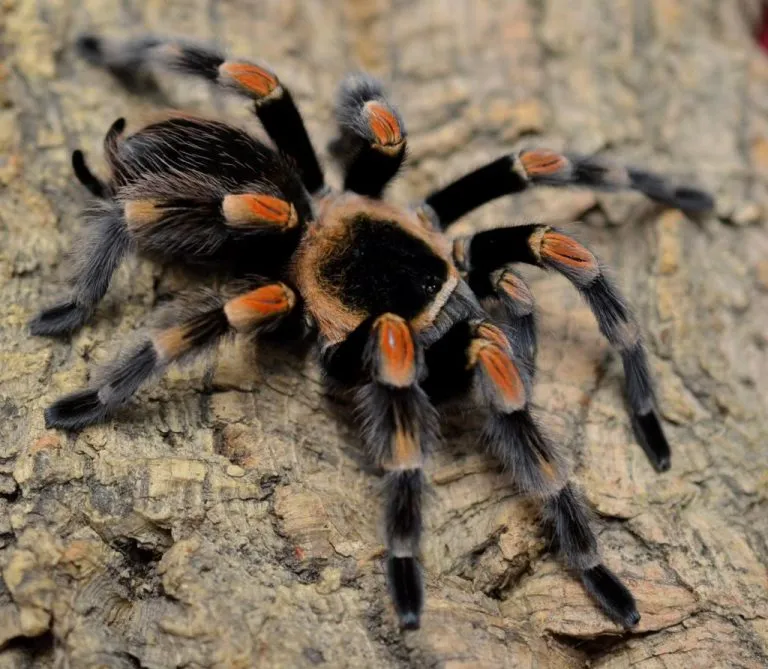Choosing the Right Enclosure for Your Tarantula
One of the most critical aspects of Mexican Red Knee Tarantula care is providing the correct habitat. A well-designed enclosure replicates the tarantula’s natural environment, ensuring its health and well-being. This starts with selecting a suitable enclosure, which should be appropriately sized to accommodate the tarantula’s growth and activity level. The enclosure should also be made of a material that is easy to clean and maintain, such as glass or acrylic. Avoid enclosures with sharp edges or features that could pose a risk of injury to your tarantula. Proper housing provides a secure and comfortable home, allowing your pet to thrive. The proper enclosure helps reduce stress and promotes natural behaviors, leading to a happier, healthier tarantula.
Enclosure Size Requirements
The size of the enclosure is crucial for your Mexican Red Knee Tarantula’s well-being. A juvenile tarantula can start in a smaller enclosure, such as a 5-gallon tank. As it grows, you’ll need to upgrade to a larger enclosure. An adult Mexican Red Knee Tarantula will need an enclosure that is at least 10 to 20 gallons. The enclosure should be wider than it is tall, as these tarantulas are terrestrial and spend most of their time on the ground. Ensure that the enclosure has enough horizontal space for the tarantula to move around comfortably and explore. Too small of an enclosure can restrict movement, while too large of an enclosure can make it difficult for the tarantula to find its food and feel secure. The appropriate size is essential to providing the tarantula with a comfortable environment.
Substrate Selection and Setup
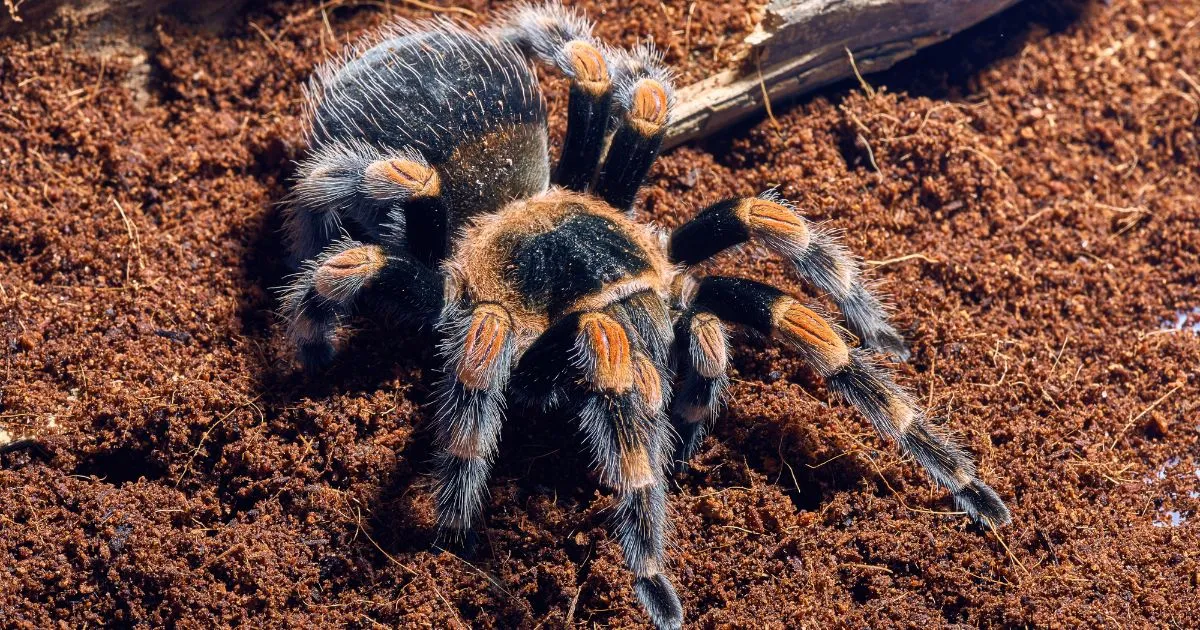
The substrate is the material that lines the bottom of your tarantula’s enclosure. It serves multiple purposes, including providing a surface for the tarantula to walk on, burrow in, and regulate humidity. A good substrate for a Mexican Red Knee Tarantula should be able to retain moisture, allow for burrowing, and be non-toxic. Popular choices include a mix of peat moss, coconut fiber, and a small amount of vermiculite or sphagnum moss. The substrate should be deep enough for the tarantula to burrow comfortably, typically 4-6 inches deep. The substrate should be kept slightly moist, but not waterlogged. Proper substrate selection ensures that your tarantula can thrive in a healthy and comfortable environment. Be sure to regularly monitor the substrate and replace it as needed to prevent mold or bacterial growth.
Maintaining Optimal Humidity and Temperature
Humidity and temperature are critical factors in Mexican Red Knee Tarantula care. These tarantulas thrive in a moderately humid environment, typically between 60-70%. To achieve this, you can mist the enclosure with water a few times a week, or more often if the humidity drops too low. Avoid excessive misting, which can lead to mold growth. You can monitor humidity levels using a hygrometer. The ideal temperature range for a Mexican Red Knee Tarantula is between 75-85°F (24-29°C). You can maintain this temperature using a heat mat or a low-wattage heat lamp. Place the heat source on one side of the enclosure to create a temperature gradient, allowing the tarantula to regulate its body temperature. Maintaining the correct temperature and humidity levels is essential for your tarantula’s health and well-being, aiding in molting and overall activity.
Understanding the Importance of Ventilation
Proper ventilation is essential to prevent the buildup of mold and bacteria in your tarantula’s enclosure. Good ventilation helps regulate humidity levels and ensures that the air inside the enclosure remains fresh. Enclosures should have ventilation holes or a screen top. Avoid enclosures with inadequate ventilation, as this can lead to respiratory problems for your tarantula. Position the enclosure in an area with good air circulation, but away from drafts. It’s important to strike a balance between maintaining adequate humidity and providing sufficient ventilation. Poor ventilation can create a breeding ground for harmful pathogens, making the enclosure unhealthy for your pet. Regularly inspect your enclosure to ensure that the ventilation is working correctly and that there are no signs of mold or mildew.
Feeding Your Mexican Red Knee Tarantula
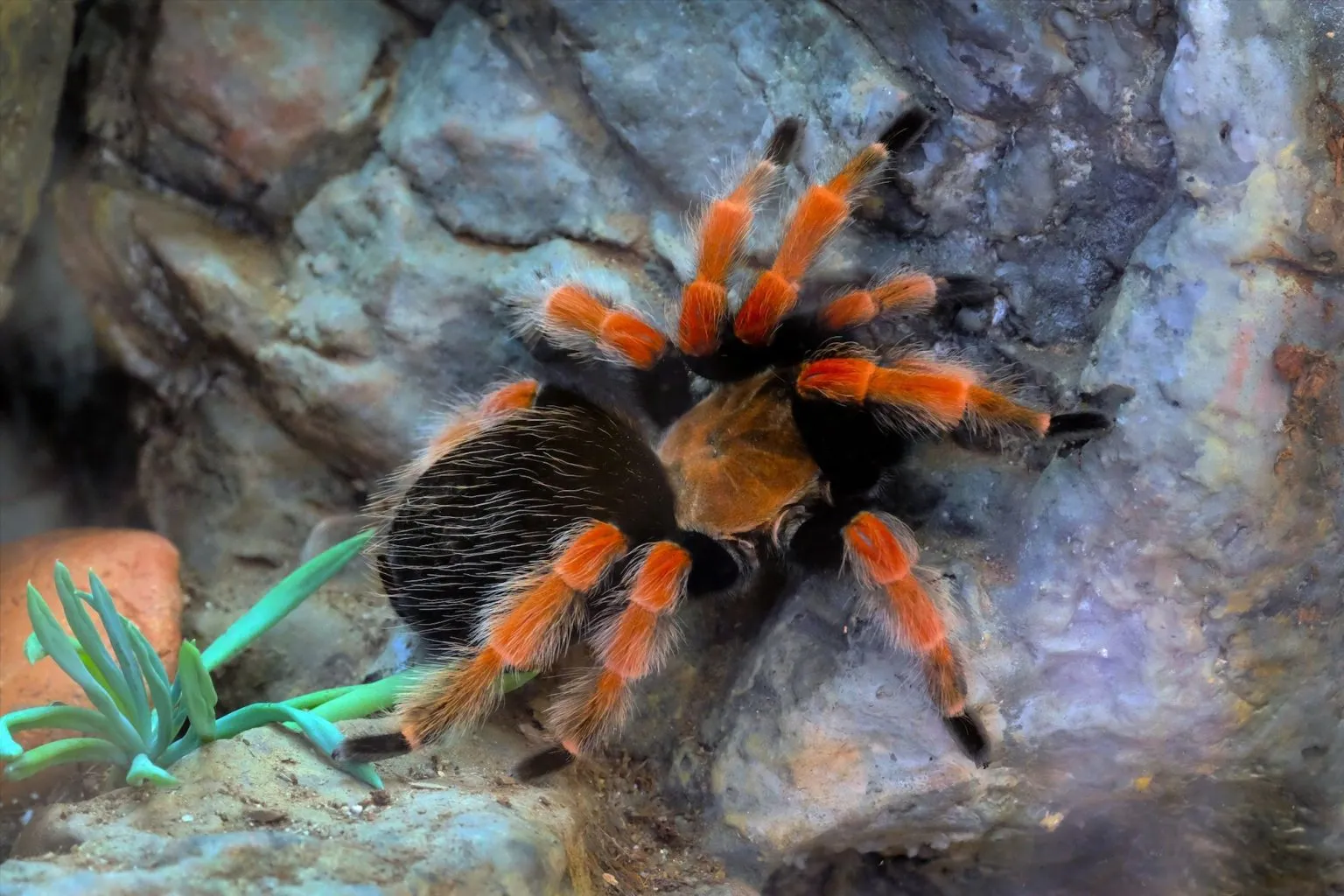
Proper feeding is crucial for maintaining a healthy Mexican Red Knee Tarantula. The tarantula’s diet and feeding schedule significantly influence its overall health, growth, and longevity. Providing the right type of food and adhering to a regular feeding schedule will ensure your tarantula receives the necessary nutrients. This involves selecting appropriate prey items, considering their size and nutritional value, and offering them at the right frequency. Remember that overfeeding can be as detrimental as underfeeding. Understanding your tarantula’s dietary needs and adapting your feeding practices accordingly is essential for their care.
Appropriate Food Choices and Sizes
Mexican Red Knee Tarantulas primarily feed on insects. The ideal food choices include crickets, mealworms, and roaches. The size of the prey should be appropriate for the size of your tarantula. As a general rule, the prey should be no larger than the tarantula’s abdomen. You can feed juvenile tarantulas smaller prey items, such as small crickets or pre-killed mealworms. Adult tarantulas can be fed larger crickets or roaches. It is important to avoid feeding your tarantula wild-caught insects, as they may carry parasites or pesticides. Always gut-load the insects you offer to your tarantula, by feeding them nutritious food a few days before offering them to your pet. This ensures that the tarantula receives the maximum nutritional benefit.
Feeding Frequency and Schedules
The feeding frequency for your Mexican Red Knee Tarantula depends on its age and size. Spiderlings and juveniles should be fed more frequently than adults. Spiderlings can be fed every other day, while juveniles can be fed 2-3 times per week. Adult tarantulas only need to be fed once or twice a week. Always observe your tarantula’s behavior and adjust the feeding schedule accordingly. If the tarantula is refusing food, it may be preparing to molt or may be stressed. Remove any uneaten prey within 24 hours to prevent the buildup of waste and potential harm to the tarantula. Overfeeding can lead to health problems, so be mindful of your tarantula’s needs. Ensure that fresh water is always available, particularly when the tarantula is eating regularly.
Providing Fresh Water
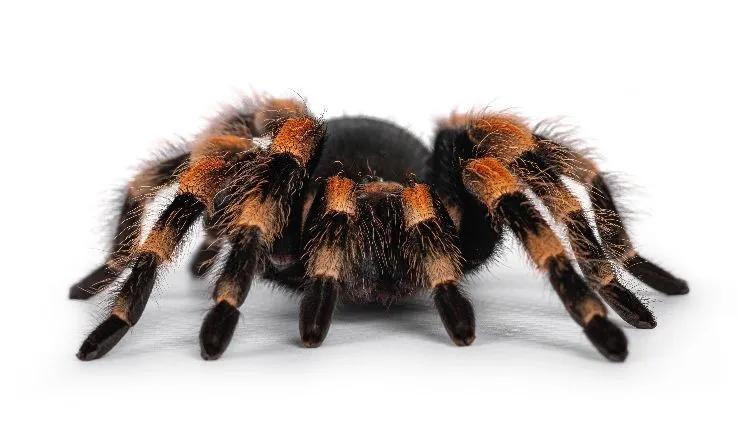
Providing fresh water is essential for your Mexican Red Knee Tarantula’s hydration. Always have a shallow water dish available in the enclosure. The water dish should be shallow enough to prevent the tarantula from drowning. Use a water dish made of a material that is easy to clean, such as plastic or ceramic. Refill the water dish with fresh water every 1-2 days. You can also mist the enclosure with water, but be sure to provide a separate water dish. Avoid using tap water, which may contain harmful chemicals. Instead, use dechlorinated water or bottled water. The availability of fresh water is crucial for the tarantula’s health and well-being, especially during molting. Ensure the dish is always clean to prevent contamination.
Grooming Your Tarantula
Grooming, in the context of tarantulas, primarily involves understanding and assisting with the molting process. Tarantulas shed their exoskeletons as they grow, a process known as molting. During this time, they are vulnerable and require a specific environment to successfully molt. This is a natural and vital part of their life cycle. Aside from molting, there is little direct ‘grooming’ that you will perform. Instead, it is about providing the right environment and being observant of the signs that your tarantula is about to molt. The process requires patience and a good understanding of the tarantula’s needs.
Understanding Molting and What to Expect
Molting is a significant event in a tarantula’s life. It involves the tarantula shedding its old exoskeleton and growing a new one. Before molting, the tarantula may stop eating, become less active, and may change colors. Some tarantulas will also spend more time in their hides. The process can take several hours or even days, depending on the size of the tarantula. During molting, it is important to avoid disturbing the tarantula. Keep the humidity and temperature levels stable. After molting, the tarantula’s new exoskeleton will be soft. It will take a few days for the exoskeleton to harden. Do not feed your tarantula for a week or two after molting, as it needs time to recover. Understanding the molting process helps you support your tarantula’s health during this crucial stage of its life.
Dealing with Potential Health Issues and Concerns
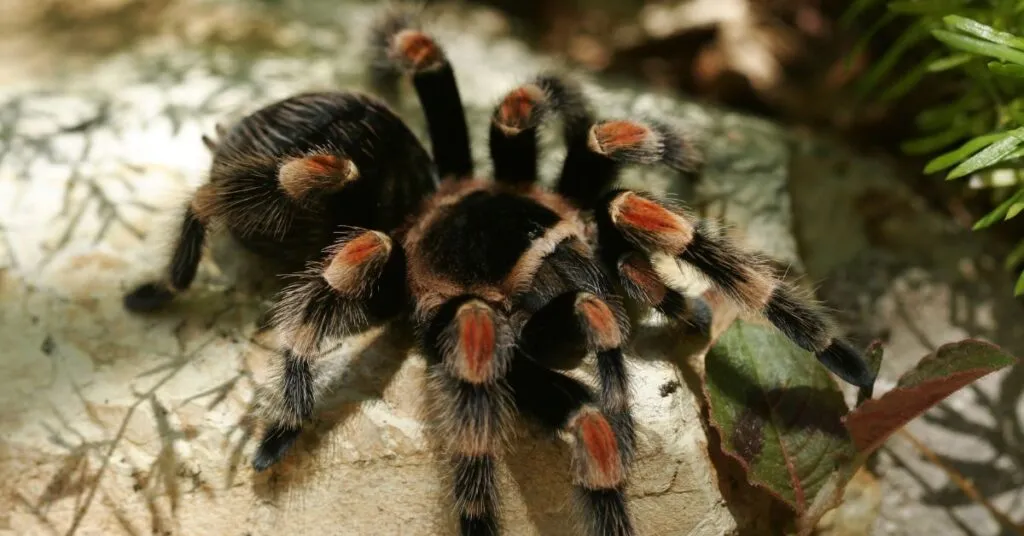
While Mexican Red Knee Tarantulas are generally hardy, they can be susceptible to certain health issues. Common problems include mites, fungal infections, and injuries. Regularly inspect your tarantula for any signs of illness or injury. Look for unusual behavior, changes in appetite, or any visible parasites. If you suspect your tarantula is sick, consult with a veterinarian experienced in exotic animals. Ensure your tarantula’s environment is clean and free from potential hazards. Proper care, including maintaining the right temperature, humidity, and cleanliness, will help prevent most health problems. Rapidly addressing any health issues and consulting with a specialist is the best way to protect your tarantula.
Handling Your Tarantula Safely
Handling a Mexican Red Knee Tarantula should be approached with caution and respect. While these tarantulas are generally docile, they can bite if they feel threatened. Their bite is typically not life-threatening to humans, but it can be painful. Furthermore, handling can stress the tarantula. Therefore, handle your tarantula only when necessary. The best way to appreciate these fascinating creatures is to observe them in their enclosure. When handling is unavoidable, understanding safe handling techniques is essential to ensure both your and the tarantula’s well-being. This includes minimizing stress and avoiding potential injury.
Minimizing Stress and Safe Handling Techniques
When handling your Mexican Red Knee Tarantula, move slowly and calmly. Avoid sudden movements or loud noises, as these can startle the tarantula and cause it to become defensive. To handle the tarantula, gently coax it onto your hand, allowing it to walk on its own. Avoid grabbing or forcing the tarantula. Always wash your hands before and after handling to prevent the spread of bacteria or harmful substances. Handle the tarantula close to the ground to minimize the risk of injury if it falls. Always be mindful of your tarantula’s behavior and body language. If the tarantula appears agitated or defensive, it is best to put it back in its enclosure. Proper handling techniques prioritize the safety and well-being of both the handler and the tarantula. Ensure a stress-free experience.
Avoiding Drops and Potential Injuries

A fall can seriously injure a tarantula. The tarantula’s exoskeleton is fragile, and a fall can cause its abdomen to rupture or its legs to break. Always handle the tarantula close to the ground, preferably while sitting on the floor or near a soft surface. Avoid handling the tarantula over hard surfaces. If the tarantula does start to fall, try to gently guide it onto a soft surface or onto your other hand. Do not try to catch the tarantula, as this could cause it to fall even further. If your tarantula falls, examine it carefully for any signs of injury. Even a small fall can be damaging. Preventing drops is a key part of responsible tarantula care and ensuring the long life of your pet. Handling in a safe environment is of utmost importance.
